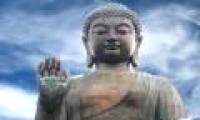
The United Nations Science, Education and Cultural Organization (Unesco) has recognized Lumbini, the birthplace of Shakyamuni Buddha, as a World Cultural Heritage in 1997.

Unesco's Scientific, Educational and Cultural Organization has recognized the Buddhist architectural complex of Horyuji temple area, Nara of Japan is the World Cultural Heritage in

The United Nations Science, Education and Culture Organization recognized India's Konark Solar Temple as a World Cultural Heritage in 1984.
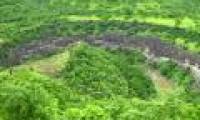
Unesco Scientific, Educational and Cultural Organization has recognized Ajanta Cave Temple of India as a World Cultural Heritage in 1983.
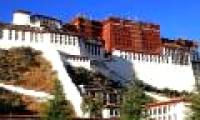
Unesco's Scientific, Educational and Cultural Organization has recognized Potola Palace as a World Cultural Heritage in 1994.

Unesco's Scientific, Educational and Cultural Organization has recognized the Mac Cao Stone Cave as a World Cultural Heritage in 1987.

Unesco's Scientific, Educational and Cultural Organization recognized Emei Mountain and China's Leshan Buddha and the world's mixed heritage in 1996.

The cremated remains of Buddha, also known as Shakyamuni Buddha (Siddhārtha Gautama), were found in a porcelain ark in Jingxuan County, Gansu Province, China.

Archaeologists studying in Nepal have discovered evidence of an architecture at the birthplace of the Buddha dating back to the 6th century BC.

A hidden remains inside a 1,000-year-old gold chest in China can help archaeologists learn
 The United Nations Science, Education and Cultural Organization (Unesco) has recognized Lumbini, the birthplace of Shakyamuni Buddha, as a World Cultural Heritage in 1997.
The United Nations Science, Education and Cultural Organization (Unesco) has recognized Lumbini, the birthplace of Shakyamuni Buddha, as a World Cultural Heritage in 1997. Unesco's Scientific, Educational and Cultural Organization has recognized the Buddhist architectural complex of Horyuji temple area, Nara of Japan is the World Cultural Heritage in
Unesco's Scientific, Educational and Cultural Organization has recognized the Buddhist architectural complex of Horyuji temple area, Nara of Japan is the World Cultural Heritage in The United Nations Science, Education and Culture Organization recognized India's Konark Solar Temple as a World Cultural Heritage in 1984.
The United Nations Science, Education and Culture Organization recognized India's Konark Solar Temple as a World Cultural Heritage in 1984. Unesco Scientific, Educational and Cultural Organization has recognized Ajanta Cave Temple of India as a World Cultural Heritage in 1983.
Unesco Scientific, Educational and Cultural Organization has recognized Ajanta Cave Temple of India as a World Cultural Heritage in 1983. Unesco's Scientific, Educational and Cultural Organization has recognized Potola Palace as a World Cultural Heritage in 1994.
Unesco's Scientific, Educational and Cultural Organization has recognized Potola Palace as a World Cultural Heritage in 1994. Unesco's Scientific, Educational and Cultural Organization has recognized the Mac Cao Stone Cave as a World Cultural Heritage in 1987.
Unesco's Scientific, Educational and Cultural Organization has recognized the Mac Cao Stone Cave as a World Cultural Heritage in 1987. Unesco's Scientific, Educational and Cultural Organization recognized Emei Mountain and China's Leshan Buddha and the world's mixed heritage in 1996.
Unesco's Scientific, Educational and Cultural Organization recognized Emei Mountain and China's Leshan Buddha and the world's mixed heritage in 1996. The cremated remains of Buddha, also known as Shakyamuni Buddha (Siddhārtha Gautama), were found in a porcelain ark in Jingxuan County, Gansu Province, China.
The cremated remains of Buddha, also known as Shakyamuni Buddha (Siddhārtha Gautama), were found in a porcelain ark in Jingxuan County, Gansu Province, China. Archaeologists studying in Nepal have discovered evidence of an architecture at the birthplace of the Buddha dating back to the 6th century BC.
Archaeologists studying in Nepal have discovered evidence of an architecture at the birthplace of the Buddha dating back to the 6th century BC. A hidden remains inside a 1,000-year-old gold chest in China can help archaeologists learn
A hidden remains inside a 1,000-year-old gold chest in China can help archaeologists learn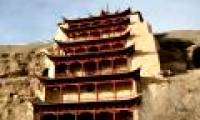


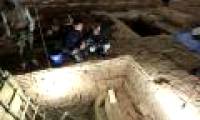

 Do signals from extraterrestrial civilizations detected by Sky Eye really exist?
Do signals from extraterrestrial civilizations detected by Sky Eye really exist? 'City without air conditioning' in China: People don't know what heat is!
'City without air conditioning' in China: People don't know what heat is! The element of the sun god is giving scientists a headache
The element of the sun god is giving scientists a headache Unique Village: Roofs Become Roads for Residents!
Unique Village: Roofs Become Roads for Residents! Top 7 strange psychological effects of the brain that we all have without knowing
Top 7 strange psychological effects of the brain that we all have without knowing Which is the most terrifying bedroom elixir in Chinese history?
Which is the most terrifying bedroom elixir in Chinese history? Earth's core may start rotating in reverse
Earth's core may start rotating in reverse A day in Japan can be up to 30 hours long, does this country live in a different 'timeline'?
A day in Japan can be up to 30 hours long, does this country live in a different 'timeline'?